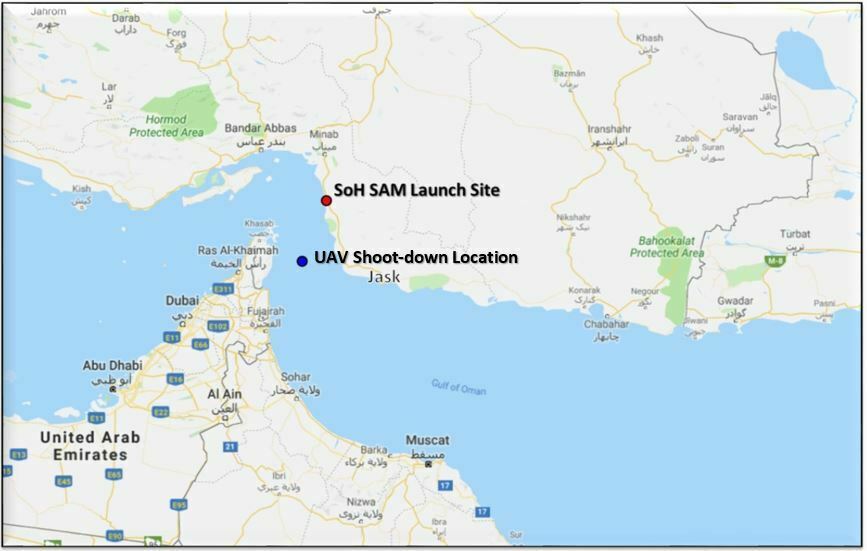U.S. Prepped for Strikes on Iran Before Approval Was Withdrawn

The United States made preparations for a military strike against Iran in retaliation for the downing of a U.S. surveillance drone, but the operation was abruptly called off with just hours to go, a U.S. official said.
The official, who was not authorized to discuss the operation publicly and spoke on condition of anonymity, said the targets would have included radars and missile batteries. The New York Times reported that President Donald Trump had approved the strikes Thursday night, but then called them off. The newspaper cited anonymous senior administration officials.
The White House on Thursday night declined requests for comment.
Asked earlier in the day about a U.S. response to the attack, Trump said, “You’ll soon find out.”
The swift reversal was a stark reminder of the serious risk of military conflict between U.S. and Iranian forces as the Trump administration combines a “maximum pressure” campaign of economic sanctions with a buildup of American forces in the region. As tensions mounted in recent weeks, there have been growing fears that either side could make a dire miscalculation that would lead to war.
According to the official who spoke to The Associated Press, the strikes were recommended by the Pentagon and were among the options presented to senior administration officials.
It was unclear how far the preparations had gone, but no shots were fired or missiles launched, the official said.
The military operation was called off around 7:30 p.m. Washington time, after Trump had spent most of Thursday discussing Iran strategy with top national security advisers and congressional leaders.

The downing of the U.S. drone — a huge, unmanned aircraft — over the Strait of Hormuz prompted accusations from the U.S. and Iran about who was the aggressor. Iran insisted the drone violated Iranian airspace; Washington said it had been flying over international waters.
Trump’s initial comments on the attack were succinct. He declared in a tweet that “Iran made a very big mistake!” But he also suggested that shooting down the drone — which has a wingspan wider than a Boeing 737 — was a foolish error rather than an intentional escalation, suggesting he may have been looking for some way to avoid a crisis.
“I find it hard to believe it was intentional, if you want to know the truth,” Trump said at the White House. “I think that it could have been somebody who was loose and stupid that did it.”
Trump, who has said he wants to avoid war and negotiate with Iran over its nuclear ambitions, cast the shoot-down as “a new wrinkle … a new fly in the ointment.” Yet he also said “this country will not stand for it, that I can tell you.”
He said the American drone was unarmed and unmanned and “clearly over international waters.” It would have “made a big, big difference” if someone had been inside, he said.
But fears of open conflict shadowed much of the discourse in Washington. As the day wore on, Trump summoned his top national security advisers and congressional leaders to the White House for an hour-long briefing in the Situation Room. Attendees included Secretary of State Mike Pompeo, national security adviser John Bolton, CIA Director Gina Haspel, Joint Chiefs Chairman Gen. Joseph Dunford, acting Defense Secretary Patrick Shanahan and Army Secretary Mark Esper, whom Trump has said he’ll nominate as Pentagon chief.
Pompeo and Bolton have advocated hard-line policies against Iran, but Rep. Adam Schiff, chairman of the House Intelligence Committee, said, “the president certainly was listening” when congressional leaders at the meeting urged him to be cautious and not escalate the already tense situation.
The Trump administration has been putting increasing economic pressure on Iran for more than a year. It reinstated punishing sanctions following Trump’s decision to pull the U.S. out of an international agreement intended to limit Iran’s nuclear program in exchange for relief from earlier sanctions.
Citing Iranian threats, the U.S. recently sent an aircraft carrier to the Persian Gulf region and deployed additional troops alongside the tens of thousands already there. All this has raised fears that a miscalculation or further rise in tensions could push the U.S. and Iran into an open conflict 40 years after Tehran’s Islamic Revolution.
To Read The Full Story
Are you already a subscriber?
Click "Sign In" to log in!

Become a Web Subscriber
Click “Subscribe” below to begin the process of becoming a new subscriber.

Become a Print + Web Subscriber
Click “Subscribe” below to begin the process of becoming a new subscriber.

Renew Print + Web Subscription
Click “Renew Subscription” below to begin the process of renewing your subscription.







